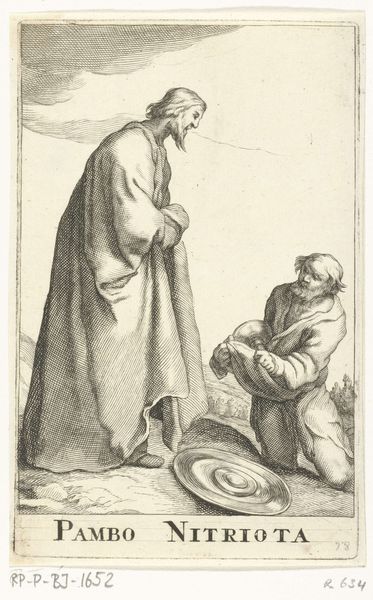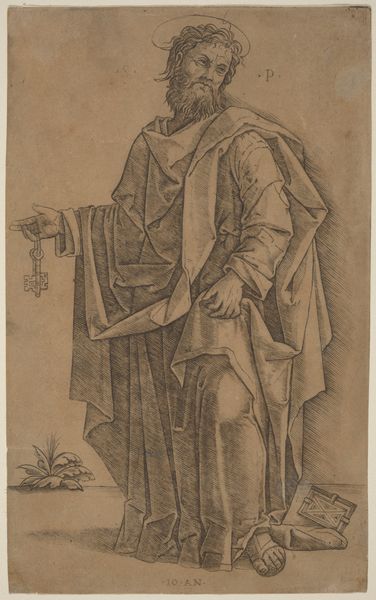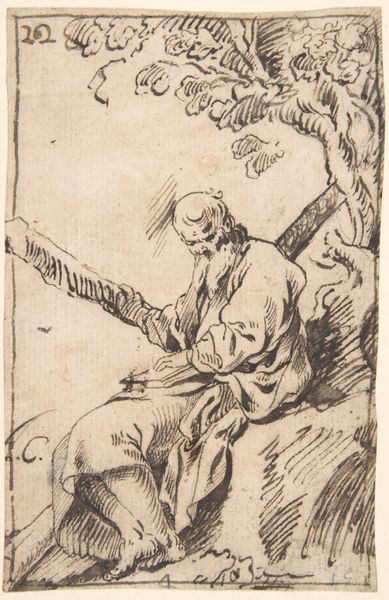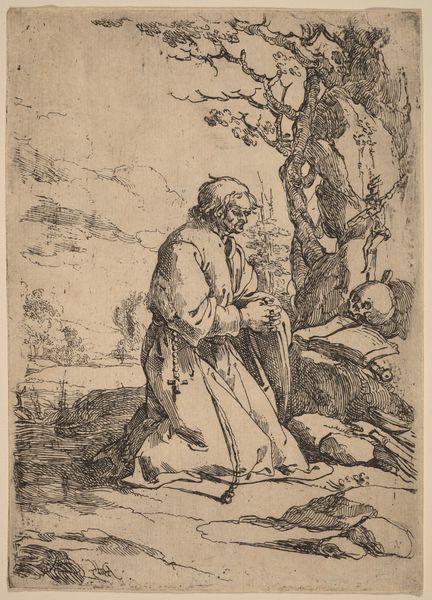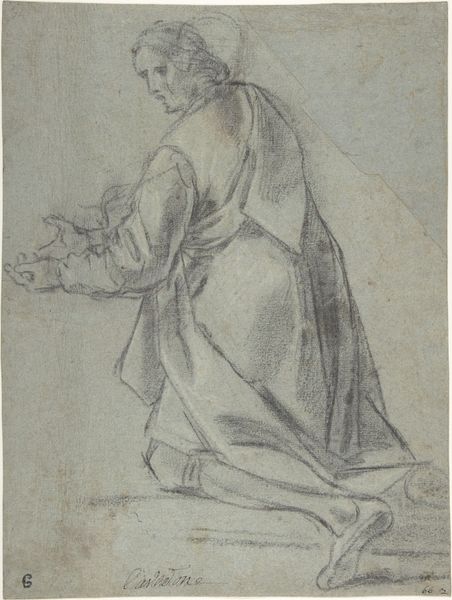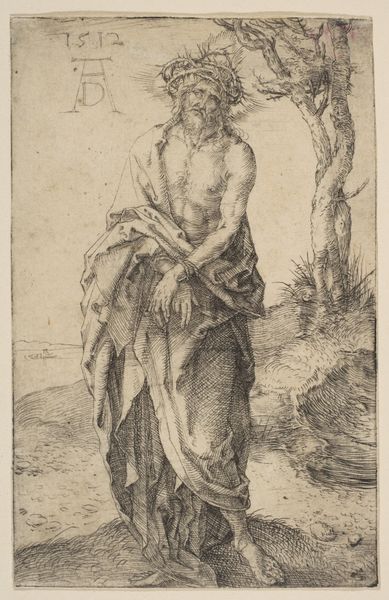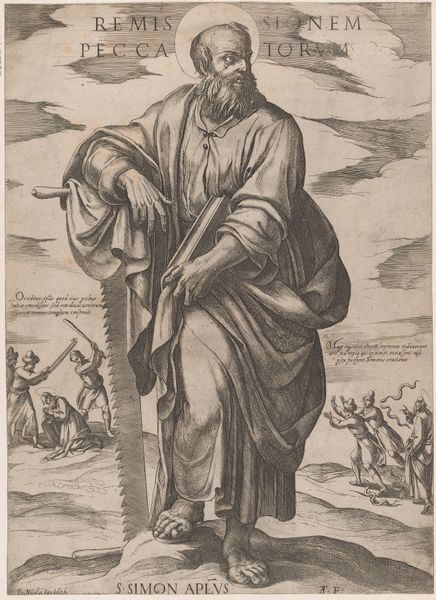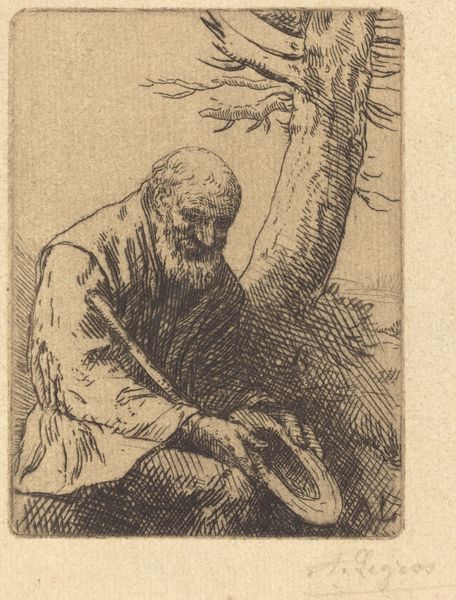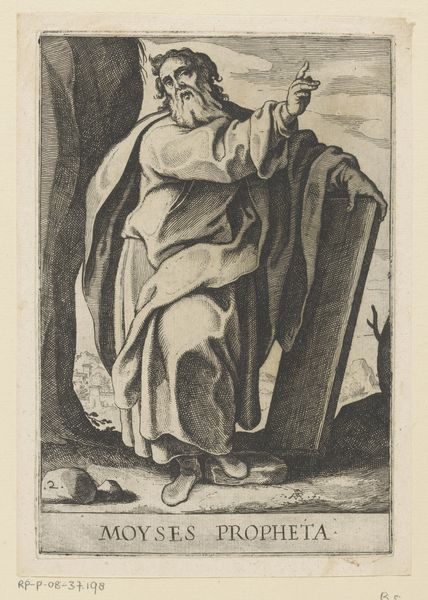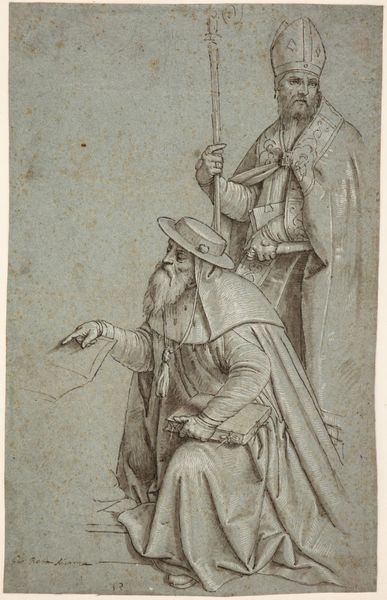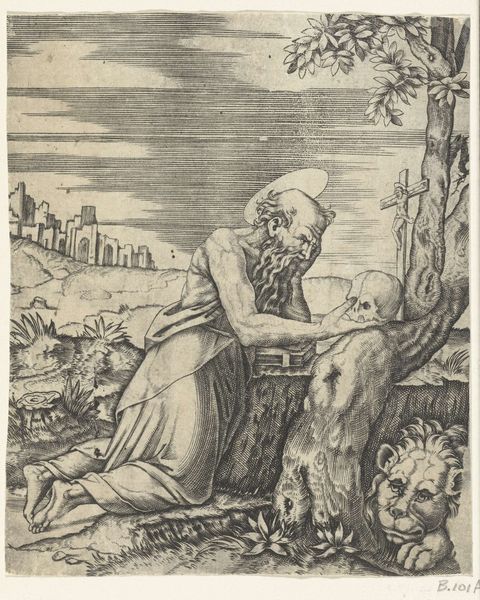
A sainted bishop of the Benedictine order kneeling towards the right and pointing at the heavens 1620 - 1630
0:00
0:00
drawing, print, etching, engraving
#
portrait
#
drawing
#
baroque
# print
#
etching
#
figuration
#
pencil drawing
#
chiaroscuro
#
line
#
history-painting
#
engraving
Dimensions: Sheet (Trimmed): 10 7/8 × 7 1/16 in. (27.7 × 18 cm)
Copyright: Public Domain
Curator: Before us, we have "A sainted bishop of the Benedictine order kneeling towards the right and pointing at the heavens" created around 1620-1630, by Giuseppe Caletti. Editor: The overall impression is rather somber. The stark lines of the etching against the pale paper emphasize a solemnity, a spiritual focus perhaps. Curator: Caletti, also known as Cremonese, employs line and chiaroscuro to craft this image. The direction of the lines almost vibrate around the subject. The Benedictine figure dominates, posed against a rather softly etched backdrop. We can see both secular and spiritual symbolism with the Bishop and landscape in one space. Editor: It's interesting how the etching technique emphasizes texture. Notice how the cross-hatching creates depth, particularly in the folds of his robes. It adds weight and presence to the figure despite the image's diminutive size. I wonder about the social and historical contexts for religious images at this time? Did the church encourage this particular aesthetic? Curator: Prints like this played a vital role. This piece would disseminate a particular view of hagiography within the religious structure of the time, reinforcing power dynamics. It gives a chance for people far and wide to experience and engage with visual information. The dramatic contrast certainly reflects the prevailing taste for heightened emotionality that aligns well with Baroque aesthetics. Editor: And note the directional emphasis, too. The Bishop's arm is extended upward and pointing. This compositional element further directs our gaze beyond the earthly and into the heavens, reinforces the image’s purpose. Curator: Absolutely. We have the foreground displaying symbolic gestures such as, the pointing gesture, with the halo providing more semiotic information. It also provides more detail towards the buildings along the horizon to let the eyes roam within the entire plane. Editor: Reflecting on this work, it’s the artist’s manipulation of light through linear contrast that truly strikes me, crafting a potent statement of devotion. Curator: Yes, seeing this work highlights the relationship between visual form and ideological intent, offering insights into both artistic practices and religious thought of that time.
Comments
No comments
Be the first to comment and join the conversation on the ultimate creative platform.
